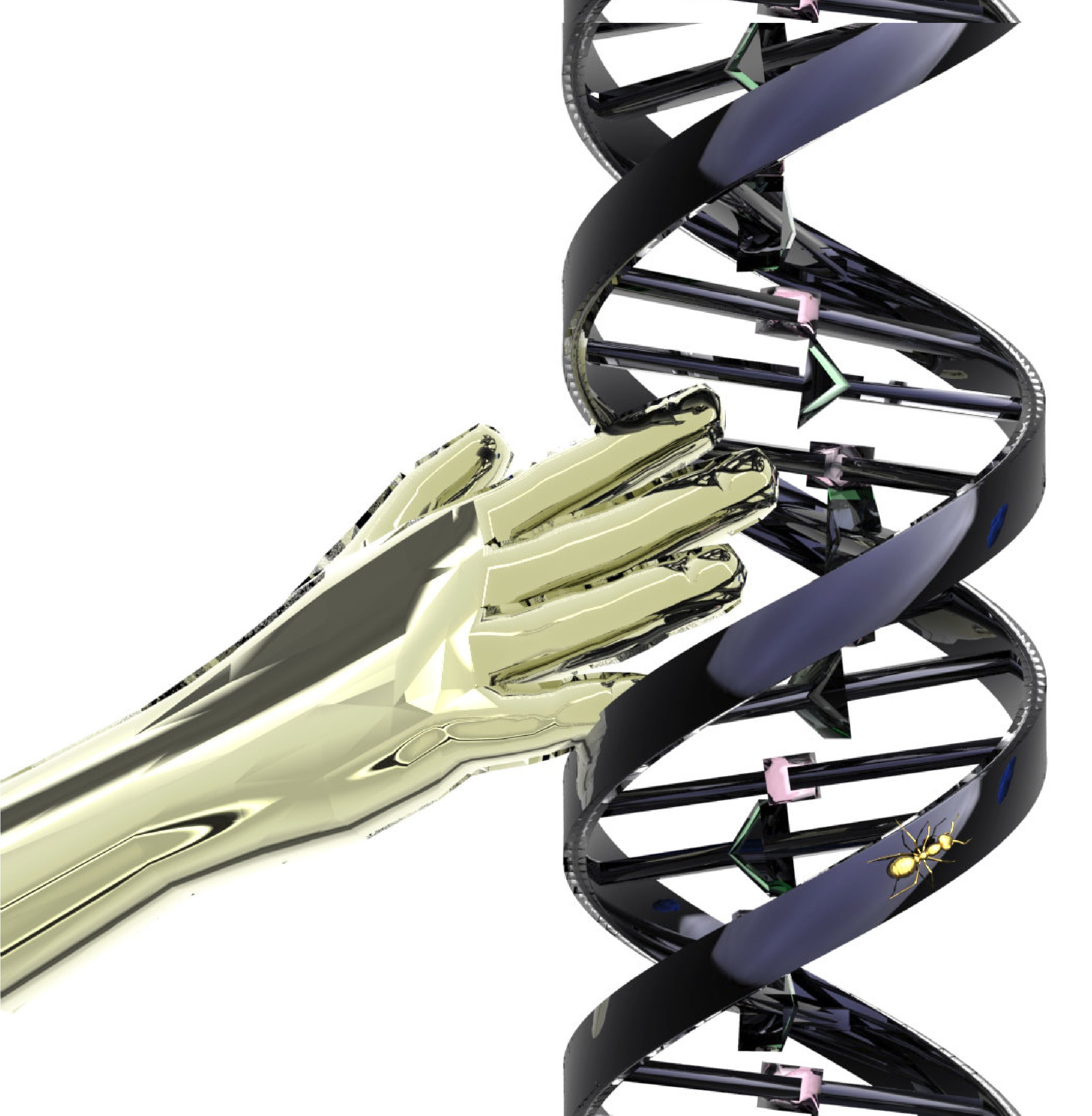
Self-Organisation
Müller-Schloer, Schmeck, and Ungerer (2011)
- Consider a system \(S\) consisting of \(n\) components \(C\)
- Each component \(C\) may interact with other components in the system
- \(C\) exhibits a behaviour induced by a control mechanism \(M\)
Strong Self-Organisation
\(S\) is called strongly self-organising, if there are \(n\) control mechanisms \(M\).
Swarms

- Local vs. global
- Homogeneous vs. heterogeneous
- Flat vs. hierarchical
- Spatial
- Observable
- Interactive
Interactive Self-Organisation

Interactive self-organisation describes the effort to making large, self-organising technical systems transparent, malleable and controllable by human designers, decision makers and users.
von Mammen (2016)
Outline
- Development Life Cycle
- Individualised, Agent-Based & Interactive
- Wetlab Application Scenario
- Challenges
Outline
- Development Life Cycle
- Individualised, Agent-Based & Interactive
- Wetlab Application Scenario
- Challenges
Development Life Cycle
Discovery Phase
- retrace the system’s and agents’ states and their interrelations
Development Phase
- cast a model
- pre-select, simplify, discretise
- make assumptions
Exploration Phase
- new relationships may emerge
Interactivity enriches the development at each step. But it also challenges the developer.
Outline
- Development Life Cycle
- Individualised, Agent-Based & Interactive
- Wetlab Application Scenario
- Challenges
Individualising Simulation
From consumer to creator.



- Provision and (semi-)automated matching of template situations to fit the user’s challenges. (Mammen et al. 2019)
- A natural interface for parametric adjustments, introducing additional programming code where necessary, navigating a simulation, as well as harnessing optimisation methods to improve one’s basis for decision making.
Modelling, Bottom-Up, Agent-Based
State-of-the-Art
- Mathematical modelling tools (Matlab, Maple, Mathematica,…)
- Requires professional expertise
- Requires a lot of time

Bottom-Up
- Elements, particles, agents,…
- States and interactions \((Sit, Act, Dat, f_{Ag})\) (Denzinger and Kordt 2000)
- Hierarchical organisation (Parry and Bithell 2012)
Interactive Simulation & Self-Organisation
Simulation Loop \(\rightarrow\) Human-in-the-Loop
(Rothrock and Narayanan 2011)
Interactive simulations synchronise with our minds.
Advantages
Understand systems, communicate systems, detect inconsistencies, learn about unaccounted aspects, immerse into emergency situations
… Corresponding Activities
Control, decision making, learning/training, analysis/debugging, refinement/engineering, empirical studies
Outline
- Development Life Cycle
- Individualised, Agent-Based & Interactive
- Wetlab Application Scenario
- Challenges
Wetlab Application Scenario
Davison, Samavati, and Jacob (2019)
Overview
- Quickly prototype a model
- Comprised of hundreds of thousands of agents
- System analysis (pattern detection, convergence analysis,…)
- Sensitivity analytical visualisations
- Integration with larger, hierarchically organised system
- Rich visualisation & multi-modal interaction
- Bridge between virtual and actual reality by means of augmentation
Wetlab Application Scenario
Knote et al. (2019)
Use-Case Developmental Biology
- Definition of intercellular interactions, biochemical and biophysical interactions
- Observation of the emergence of morphological processes/convergence to metabolic equilibria
- Add model details at different levels of scale, e.g.
- … genetic pathways
- … structural properties of the cells
- Superimposition of high-level properties such as a cell’s surface tension
- … adjustment of lower-level parameters
- Provide in-silico assays in analogy to in-vitro assays
Outline
- Development Life Cycle
- Individualised, Agent-Based & Interactive
- Wetlab Application Scenario
- Challenges
- Standardising Representations
- Innovating User Interfaces
- Reaching Application-Relevant Scales
Challenge: Standardising Representations
Arbitrary algorithmic descriptions
- Require programming expertise
- Defy comparability
- Results in limited dissemination and lack of research continuity
Solution
- Standardised model representations
- Standardised primitives
- Standardised numeric representation and integration
- Formal protocolls rather involved
- Algorithmic support of formal descriptions
Challenge: Innovating User Interfaces
\(D^2S\) Properties
- Definition and selection of subpopulations
- Creation and tracing of relationships (chains, cycles,…)
- Recognise, fuel or disrupt phase transitions/emergent effects
Solution
- Appripriate, helpful, efficient visualisation
- Natural, efficient interaction routines
- Support methods, e.g. deploying optimisers, to bridge levels of abstraction in behaviour, goal definitions, or regulating the agents’ degrees of autonomy
Merging modelling and simulation environments reduces indirections and prepares for real-world applications
Challenge: Reaching Application-Relevant Scales
\(D^2S\) Properties
Costly computations
Solution
- Optimise and parallelise
- Identify (partial) states and (partial) processes that allow for simplification of
- … the model
- … its computation
- … the model
- Dynamically put these simplifications in effect (build and revoke model hierarchies)
References
Davison, Timothy, Faramarz Samavati, and Christian Jacob. 2019. “Lifebrush: Painting, Simulating, and Visualizing Dense Biomolecular Environments.” Computers & Graphics 82. Elsevier: 232–42.
Denzinger, Jörg, and Michael Kordt. 2000. “Evolutionary on-Line Learning of Cooperative Behavior with Situation-Action-Pairs.” In Proceedings of the 4th International Conference on Multi-Agent Systems (Icmas 2000), 103–10. Boston, MA, USA.
Knote, A., S. C. Fischer, S. Cussat-Blanc, F. Niebling, D. Bernard, F. Cogoni, and S. von Mammen. 2019. “Immersive Analysis of 3D Multi-Cellular in-Vitro and in-Silico Cell Cultures.” In 2019 Ieee International Conference on Artificial Intelligence and Virtual Reality (Aivr), 82–827. doi:10.1109/AIVR46125.2019.00021.
Mammen, Sebastian von, Andreas Müller, Marc Erich Latoschik, Mario Botsch, Kirsten Brukamp, Carsten Schröder, and Michel Wacker. 2019. “VIA Vr: A Technology Platform for Virtual Adventures for Healthcare and Well-Being.” In 2019 11th International Conference on Virtual Worlds and Games for Serious Applications (Vs-Games), 1–2. IEEE.
Müller-Schloer, Christian, Hartmut Schmeck, and Theo Ungerer, eds. 2011. Organic Computing - a Paradigm Shift for Complex Systems. Autonomic Systems. Birkhäuser Verlag.
Parry, Hazel R, and Mike Bithell. 2012. “Large Scale Agent-Based Modelling: A Review and Guidelines for Model Scaling.” In Agent-Based Models of Geographical Systems, 271–308. Springer.
Rothrock, Ling, and S Narayanan. 2011. Human-in-the-Loop Simulations: Methods and Practice. Springer.
von Mammen, Sebastian. 2016. “Interactive Self-Organisation.” Habilitation Thesis, University of Augsburg.